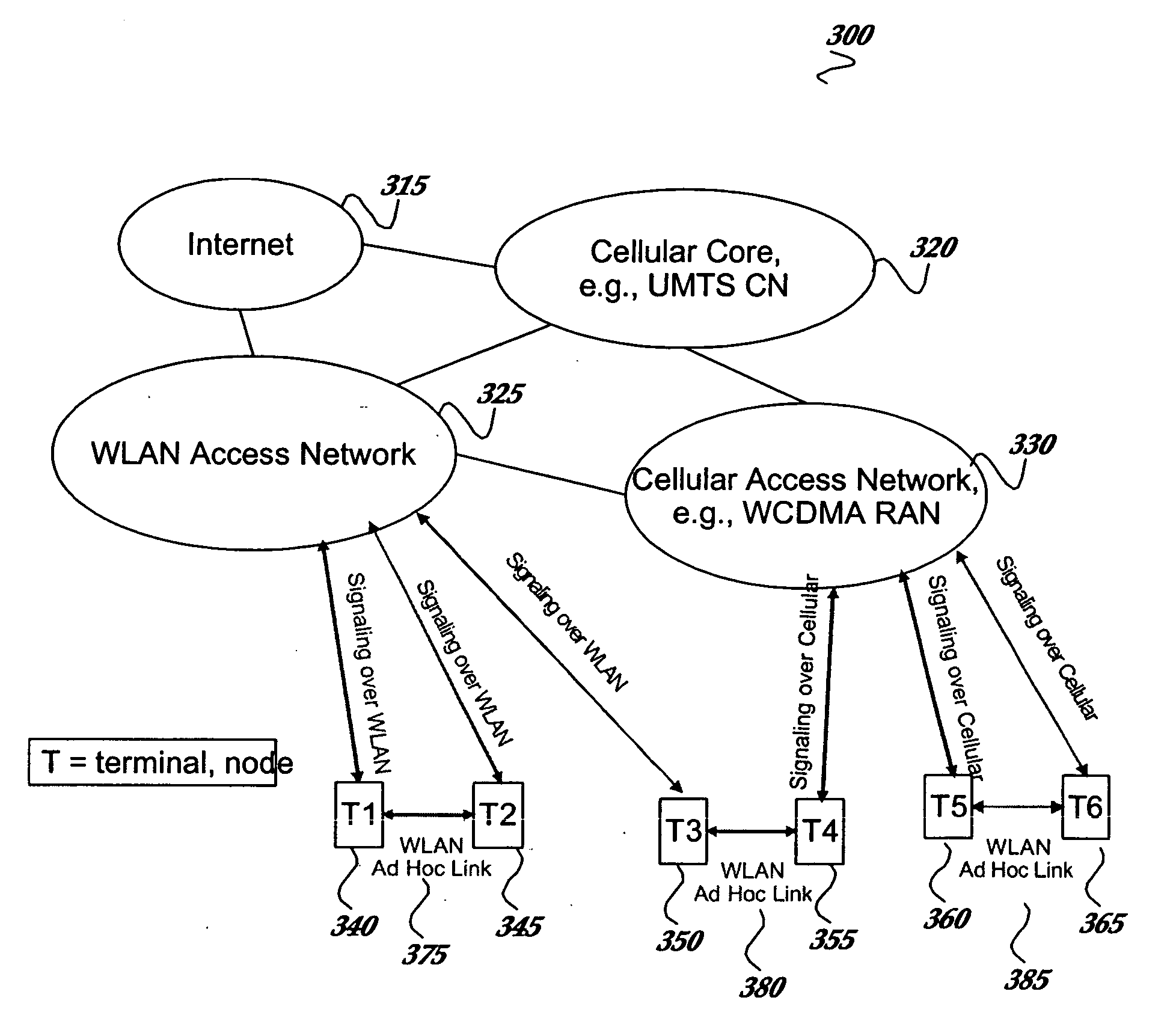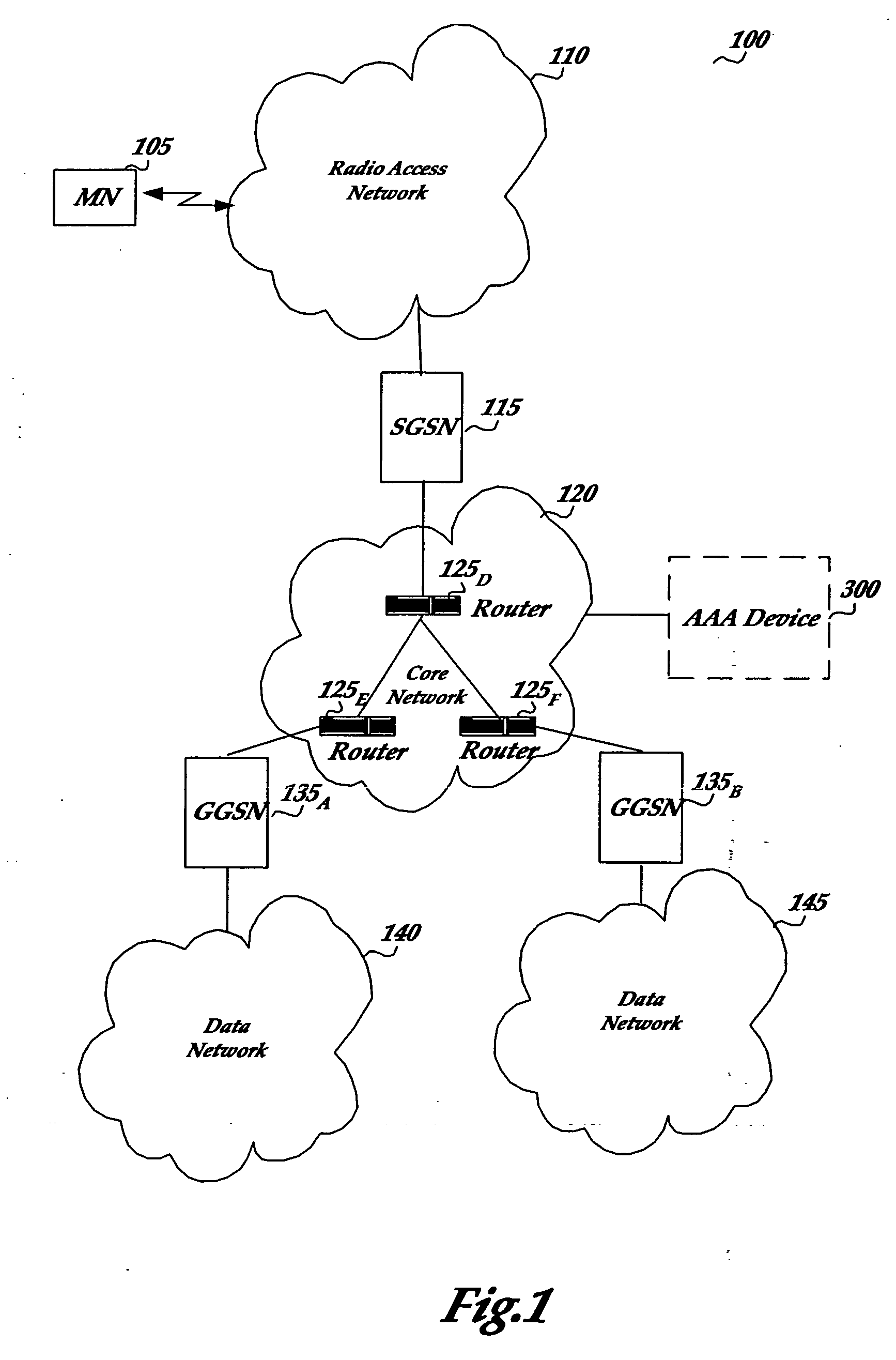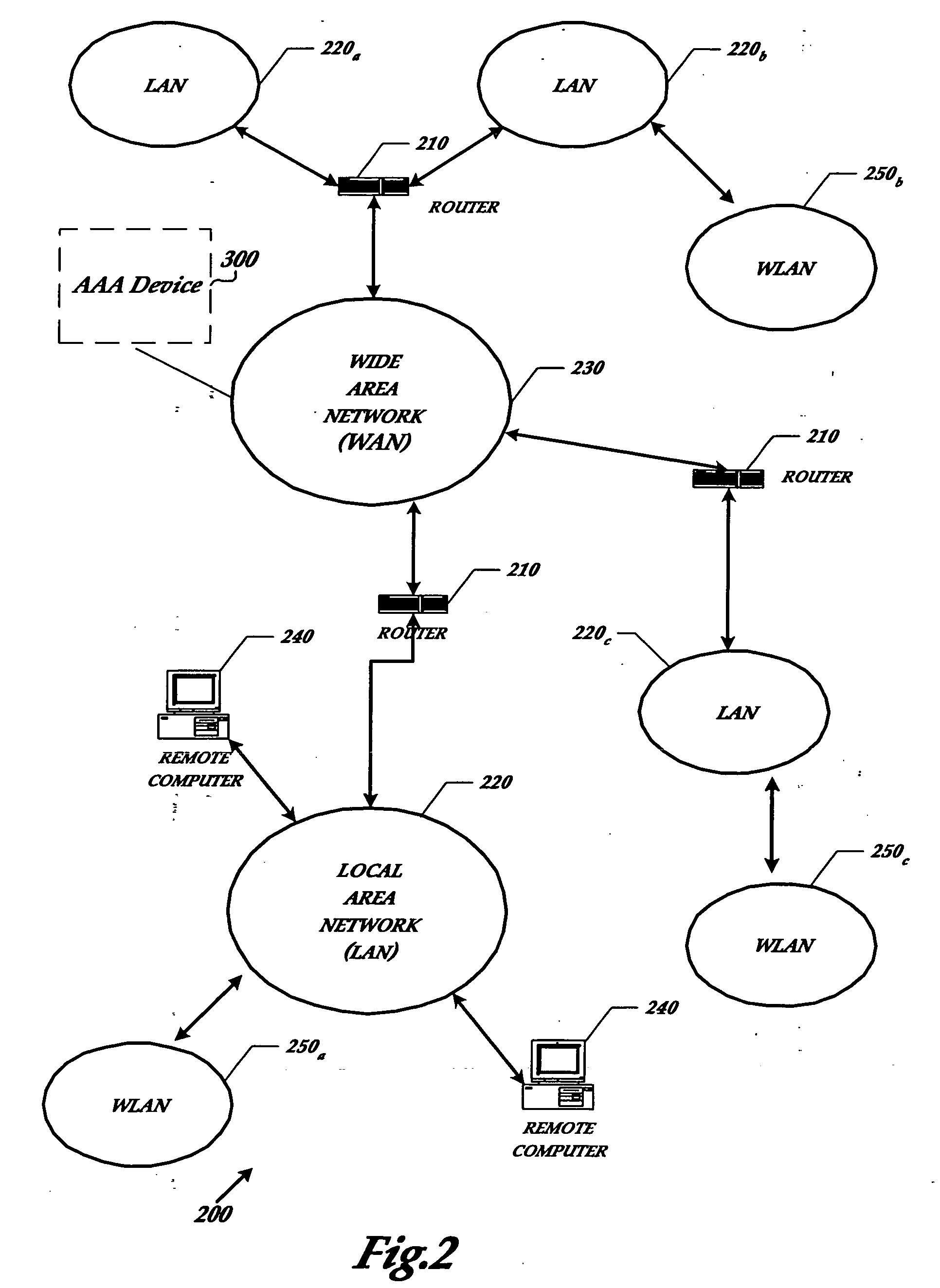Ad hoc networking of terminals aided by a cellular network
a technology of cellular network and terminal, applied in the field of ip network, can solve the problems of loss of cellular operator revenue, difficulty and clumsiness in achieving the desired trusted security level between the terminals, and costly data exchange between the mobile terminals, so as to generate additional revenue for the operator, the effect of ease of the process
- Summary
- Abstract
- Description
- Claims
- Application Information
AI Technical Summary
Benefits of technology
Problems solved by technology
Method used
Image
Examples
Embodiment Construction
[0020] In the following detailed description of exemplary embodiments of the invention, reference is made to the accompanied drawings, which form a part hereof, and which is shown by way of illustration, specific exemplary embodiments of which the invention may be practiced. Each embodiment is described in sufficient detail to enable those skilled in the art to practice the invention, and it is to be understood that other embodiments may be utilized, and other changes may be made, without departing from the spirit or scope of the present invention. The following detailed description is, therefore, not to be taken in a limiting sense, and the scope of the present invention is defined only by the appended claims.
[0021] Throughout the specification and claims, the following terms take the meanings explicitly associated herein, unless the context clearly dictates otherwise. The term “node” refers to a node on a network. The term “mobile node” and “terminal” refer to a node on the netwo...
PUM
 Login to View More
Login to View More Abstract
Description
Claims
Application Information
 Login to View More
Login to View More - R&D
- Intellectual Property
- Life Sciences
- Materials
- Tech Scout
- Unparalleled Data Quality
- Higher Quality Content
- 60% Fewer Hallucinations
Browse by: Latest US Patents, China's latest patents, Technical Efficacy Thesaurus, Application Domain, Technology Topic, Popular Technical Reports.
© 2025 PatSnap. All rights reserved.Legal|Privacy policy|Modern Slavery Act Transparency Statement|Sitemap|About US| Contact US: help@patsnap.com



